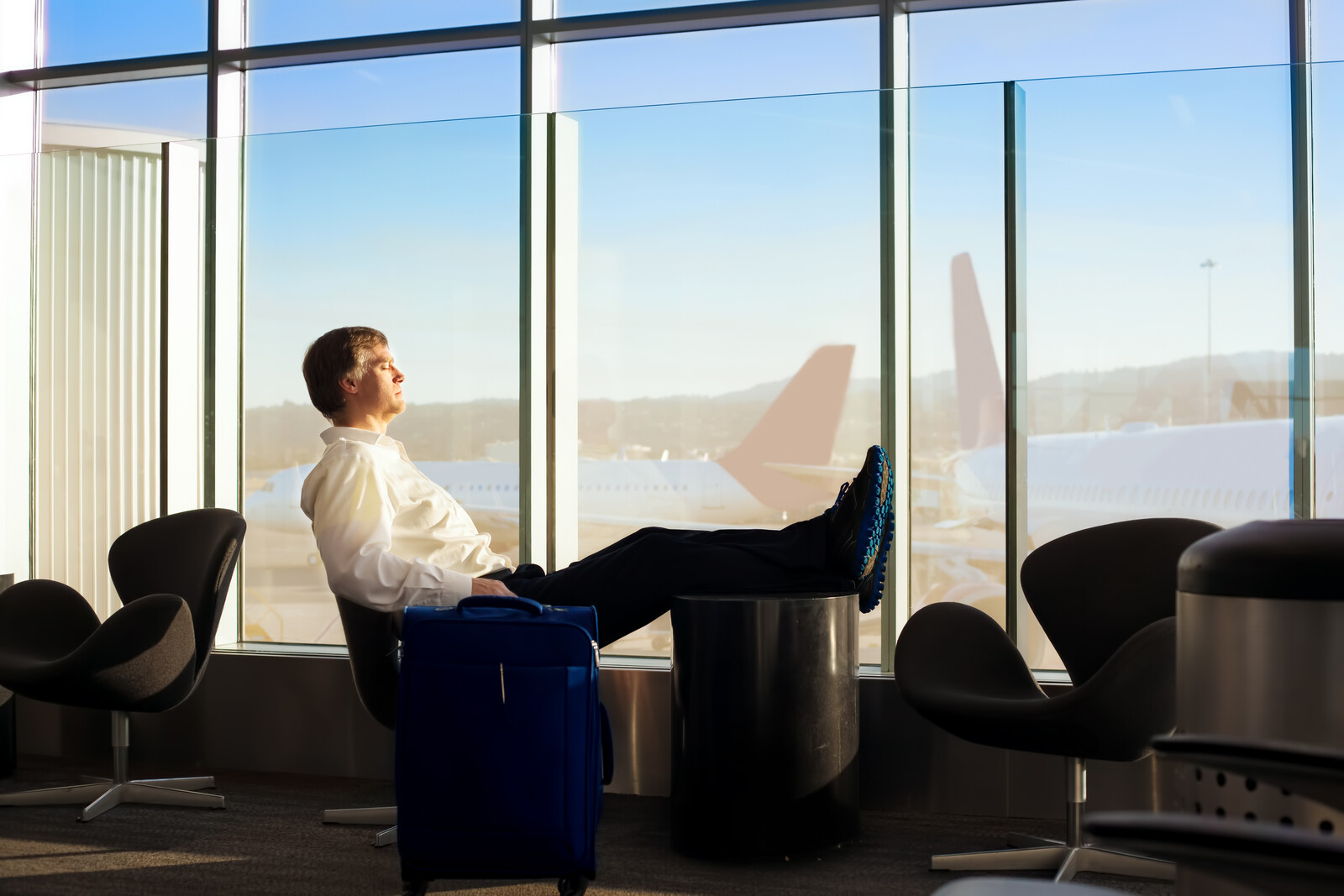
© Can Stock Photo / jarenwicklund
The recent story about an individual living at the Chicago O’Hare International Airport, apparently within the Security areas, is extraordinary. It is not that unusual to have homeless people, or others who are stranded in their travels, that live for a few days at the airport, but it is rare for that to occur in a secure area. Let’s see how you can live at the airport.
Step one: wait until there’s a pandemic, that way, everyone is in a mask, making it harder to identify you.
Step two: either find a lost airport identification badge or steal one.
Step three: hope that no one reported their badge lost or that the badging office computer has a flaw preventing it from invalidating the card’s access.
I think I better stop here. I don’t want to give away too much of the secret sauce. Plus, for this guy to pull it off for three months, he did so through several security layers and had a healthy amount of pure luck.
Airport Badging and Access Control
Many people assume the airport employees go through the same level of screening that passengers go through. In the vast majority of airports, this is not true. Airport employees go through various alternate screening measures, including a criminal history record check and a wants and warrants check, a name check against the terrorist watchlist and the no-fly list.
Second, every employee with an airport identification badge is required to pass a security training exam. Many of these are administrated by computer, under the supervision of badging office personnel. It effectively makes everyone with an airport identification badge participate in the airport security system.
Third, every employee is required to challenge any employee in a secure area that is not wearing the proper airport identification. However, these challenges typically extend to the extent of ensuring the person has a badge and not always verifying their badge has not been deactivated. That is usually the job of airport security and airport police personnel.
In the case of a lost or stolen badge, while it is deactivated in the system and cannot open doors or gates, people can still slip through behind an unsuspecting employee as they go through a door. Plus, the badge is considered “visually valid” until the expiration date on the badge is reached. That means if a person is wearing a badge that is not expired, and another employee spots them, they assume the person has a valid identification badge. This is why airports go to great links to keep track of any lost, stolen, or not returned badges upon the end of employment at the airport.
Airport Police and Security vs. Efficiency of Flight Operations
Airport law-enforcement and security personnel must balance the need for security with the potential impact on flight operations. Too much enforcement and, you end up with flight delays, passengers missing flights, and screwing up the national aviation system. Too few security checks and someone ends living at the airport. Now, I DO NOT KNOW if that was the case at O’Hare. I am speaking in generic terms. There could be other issues that allowed this person to slip undetected through public and security areas.
Another layer of security is employee inspection areas and random TSA screening checkpoints, set up throughout the airport at random locations and times. This gives employees the impression that they may be subject to screening at any day or time.
However, as these areas are established, the airport’s rumor intelligence system kicks in, and pretty soon, most airport workers know where the checkpoint is, and many will take alternate routes to avoid it. So, the security teams have to stay on the move.
The Pandemic’s Effect on Aviation Security
Despite the massive economic loss within the aviation industry, this is likely the pandemics’ additional effect on aviation. With everyone wearing masks, it is more challenging to compare the photo on someone’s badge to their face.
You would have to actively ask them to remove their face mask to ensure the badge matches the person. For most airport workers, their responsibility ends and ensuring the person has a badge. Most of them have other jobs at the airport and aren’t going to take the time to ask everyone they see to lower their mask.
The Airport Identification Badge
Presently, the TSA only requires one level of validation to enter a secure area, the airport identification badge. Many airports have taken it upon themselves to add a PIN code, so employees must present their ID and then enter their unique personal identification number to open the door. And many other airports have added the additional level of biometrics, requiring the employee to present their badge, enter their pin code, and pass the biometric check, whether facial recognition, fingerprint or hand scan system.
I have been a long-time advocate of having all three security layers for an airport access control system. It still might not make it impossible for someone to take up residence at an airport, but it becomes more difficult. When the airport issues someone with an airport identification badge, they are essentially giving them the keys to the kingdom. For many employees, that badge allows them to bypass the passenger screening checkpoint and only sometimes be subject to physical inspection of themselves and their personal belongings.
Also, I have a TILE device on my Apple AirPods to find them when they are lost. Is anyone exploring the addition of this technology into the “keys” to the airport? That way, when they are lost or stolen, there’s a much better chance of finding them.
Sometimes the airport could be doing everything right, but the natural gaps in the system can still be exploitable, or the regulatory requirements may not be enough.
By Jeffrey C. Price
